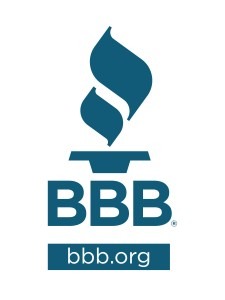From the DSEF: We’re excited to continue our blog series featuring top executives in DSEF-supporter direct selling companies today! Every few weeks we’ll introduce you to another top executive, and they’ll share their thoughts on Direct Sales, Ethics, Social Good, and why they support the DSEF.
Today we’re thrilled to continue this series with Heather Chastain, the President of Celebrating HOME. We’re thrilled to have Heather share her thoughts with you today. Enjoy!
Executive Spotlight: Heather Chastain, Celebrating HOME
What is the name of your company, and how did you become involved with the company?
The name of my company is Celebrating HOME. Celebrating HOME was formed 4 years ago through the combination of Home & Garden Party and Home Interiors. I served as President of both Home Interiors and Home & Garden Party and the opportunity to combine the best of both and relaunch under a new brand was extraordinary.
What did you do before you got involved with the company?
I have been involved in direct selling for the past 17 years serving at BeautiControl (a subsidiary of Tupperware) before moving to Home Interiors in 2006. My background includes experience in several disciplines including manufacturing, operations as well as marketing and field sales management.
What do you love about your company?
 I love that Celebrating HOME believes in supporting the total person. We recognize that men and women are many things – they are parents, friends, neighbors, members of their community as well as direct selling professionals. We are committed to helping people become stronger individuals – regardless of their background, education or income level.
I love that Celebrating HOME believes in supporting the total person. We recognize that men and women are many things – they are parents, friends, neighbors, members of their community as well as direct selling professionals. We are committed to helping people become stronger individuals – regardless of their background, education or income level.
What makes your salesforce amazing?
Our salesforce is truly remarkable. Their resilience during such massive change has been very impressive to see. They have passion for what they do and, most importantly, a heart for everyone. They are real people, many from humble backgrounds and they are living first-hand the transformative impact that this industry can have on an individual life.
Ethics is an integral part of DSA membership. How do you ensure your company maintains the highest level of ethics?
Our company has a strong foundation in Christian values and we promote honesty and integrity in all that we do. This makes it fairly easy for us to ensure that all our representatives keep a standard that DSA can be proud of. Of course, we talk a lot about it, too. We make sure that we remind all our leaders at every opportunity that this adherence to a high ethical standard is what sets us apart from so many other organizations out there. We link to the DSA code on our website and make sure that our field promotes that to their prospects as well as customers.
 Social good is another essential element of direct sales. What kind of social good campaigns does your company participate in or run?
Social good is another essential element of direct sales. What kind of social good campaigns does your company participate in or run?
Our company launched the Celebrating Hope foundation last year. This was a way to focus our long history of giving under a common umbrella. While our field has raised significant money for charities like Habitat for Humanity, American Cancer Society, Make A Wish, Wounded Warrior and Living Water Foundation over the years, they are all linked by the common element of helping bring families together.
Your company has been a Direct Selling Education Foundation supporter. Why do you think the DSEF is important?
The DSEF is a critical element for DSA member organizations. They are on the front lines, building trust in the marketplace and enhancing the industry’s reputation for all of us. The real question is why would a DSA member company NOT support the work that the DSEF does? They are committed to educating government officials, consumers and prospects alike about all the good things that Direct Selling brings to so many people across the nation.
Thank you, Heather, for sharing your thoughts with us. We are grateful for the support of companies like Celebrating HOME, that help us to spread the message of ethics, entrepreneurship and integrity around the world. We appreciate you!
Free e-book “Business Owner’s Road Map to Success.” It has over 50 pages of techniques for everything a small business owner needs to master, from business planning and ethical selling to a success mindset. It’s all there and it’s free for you. To get it, just “Like” our Facebook Page here: http://on.fb.me/KsIN6P Pass it on!










![MP900289918[1]](https://dsef.org/wp-content/uploads/2012/06/MP9002899181-202x300.jpg)










